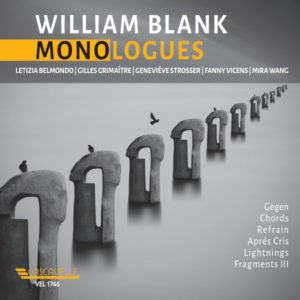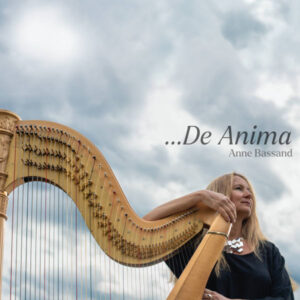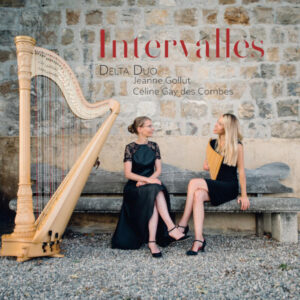The Duo Brigitte Buxtorf – Catherine Eisenhoffer, Flute and Harp
Origins and Training
Originally from Geneva, flutist Brigitte Buxtorf and harpist Catherine Eisenhoffer, after studying at their hometown’s conservatory, reunited at the Paris National Conservatory, where each won first prize in her respective discipline. During this time in the French capital, their duo was born, an endeavor that grew in prominence as soon as the two young artists returned to their homeland.
An Unusual Repertoire
The unique formation of flute and harp naturally leads its performers to an equally unconventional musical literature. Early music, enriched by extensive research that led to some remarkable discoveries, provides a significant portion of their repertoire. Yet contemporary music also presents them with numerous possibilities, as Swiss composers were inspired by their ensemble and composed specifically for it. Armin Schibler and Pierre Métral, each with a Double Concerto, and composers like Peter Mieg, Pierre Wissmer, and Henri Gagnebin, to name a few, dedicated works to them. This recording, moreover, is a testament to their curious spirit.
Excellence in Interpretation
Striving for both stylistic purity and performance quality, Brigitte Buxtorf and Catherine Eisenhoffer captivate listeners with their precise playing, the richness of their beautifully balanced sound, and their profound musicality.
Side 1
Greensleeves, Anonymous (flute and harp)
Greensleeves is the title of an anonymous English Renaissance melody that captivated Queen Elizabeth I. Dreamily indolent, with a subtly melancholic charm and gently swayed by the rhythm of a slow dance, it is presented here in a version that follows the theme with twelve variations. The main part is usually carried by the flute, while the harp provides support with broken chords or weaves around it in lace-like patterns.
Toccata (harp solo) by Loeillet
Jean-Baptiste Loeillet, a Flemish composer born in Ghent in 1653 and who died in London in 1728, was both a flutist and harpsichordist. Most of his works are written for a solo instrument or small chamber ensembles. His Toccata sparkles with the myriad colors of a finely crafted crystal: it requires both the taste and technical skill of the performer.
Theme and Variations by Rossini (flute and harp)
While some of Gioachino-Antonio Rossini’s (1792-1868) operas are justifiably famous, and his sacred music is gaining well-deserved renown, his instrumental pieces are generally less known, which is a real pity. Here we discover a lively spirit, whose wit is accompanied by a great elegance of composition and a remarkable sense of proportion. In Theme and Variations, Rossini at times seems to be gently poking fun at himself, evidently resolved not to take things too seriously. There is an effortless grace in the melodic line, from the Introduction (Adagio) that introduces a lyrical Italian-style theme, leading into four virtuoso variations. The minor mode in the third variation does not detract from the general cheerfulness, and the piece concludes with a lively, whirling coda.
Sonata by Donizetti (flute and harp)
Like Rossini, Gaetano Donizetti (1797-1848) is best known for his operas. Yet, as a professor at the Royal College of Music in Naples and later as Chapel Master at the Imperial Court of Vienna, he also composed cantatas. The piece presented here by the Buxtorf-Eisenhoffer Duo is a manuscript from the Donizetti Museum in Bergamo, untitled. We find in it the characteristic style of the composer of Lucia di Lammermoor; it is pure bel canto, and the flute is treated like a prima donna voice, with a sharp sense of breath and dramatic emphasis.
Petite Valse (harp solo) by Hasselmans
A professor at the Paris Conservatory for nearly thirty years, Hasselmans (1845-1912) trained many virtuosos. He dedicated himself to revising the principal studies and methods that form the foundation of harp education. His Petite Valse is perhaps one of the rare romantic pieces for the harp, reminiscent of the waltzes prevalent in 19th-century literature, particularly those of Chopin.
Side 2
Entr’acte and Piece for Solo Flute – Jacques Ibert
The French composer, who, after winning the Prix de Rome, directed the Villa Medici from 1936 onwards, always expressed a keen interest in wind instruments, enriching their repertoire with valuable and original pieces. Here he associates the flute with the harp in Entr’acte, composed in 1937 for his daughter Jacqueline, a harpist. This shimmering, playfully Spanish work, driven by its bouncing rhythm, enjoys a well-deserved popularity. As for the Piece for Solo Flute, it unfolds like a kind of improvisation, freely blooming in space, both meditative and infused with a luminous freshness of inspiration.
Berceuse Op. 16 by Fauré (flute and harp)
There is little need to elaborate on Gabriel Fauré’s Berceuse, initially written for violin and piano and made famous through numerous transcriptions. Imbued with tenderness and a delicate lyricism, it lends itself beautifully to the transparent rendering of flute and harp together.
Piece in the Form of a Habanera by Ravel (flute and harp)
Maurice Ravel’s (1875-1937) intense attraction to Spanish music is well known. This Piece in the Form of a Habanera, with its beguiling melodic arabesque and the languid cadence that repeats unwaveringly, is a particularly striking example of this fascination and is imbued with deep poetry. Originally composed as a vocalise in 1907, it subsequently took on several versions, including one for violin and piano.
Alla Rustica — Divertissement for Flute and Harp – André Jolivet
This work’s sole ambition is to highlight the musical qualities and versatility of two instruments ideally suited for collaboration: flute and harp. The melodic themes are somewhat reminiscent of the melismatic lines that Béla Bartók once collected in Romania. They are treated with as much variety as possible in virtuoso writing that often achieves a maximum sound intensity from this pairing of generally soft-spoken soloists.
VDE-GALLO (1973)
Our other albums with harp












